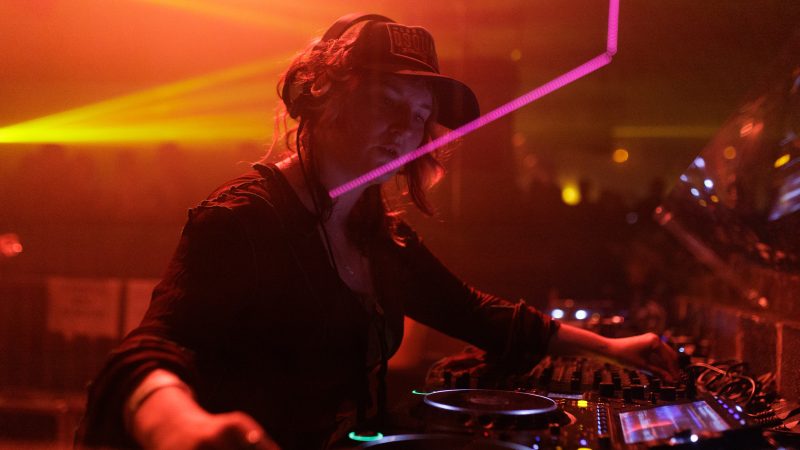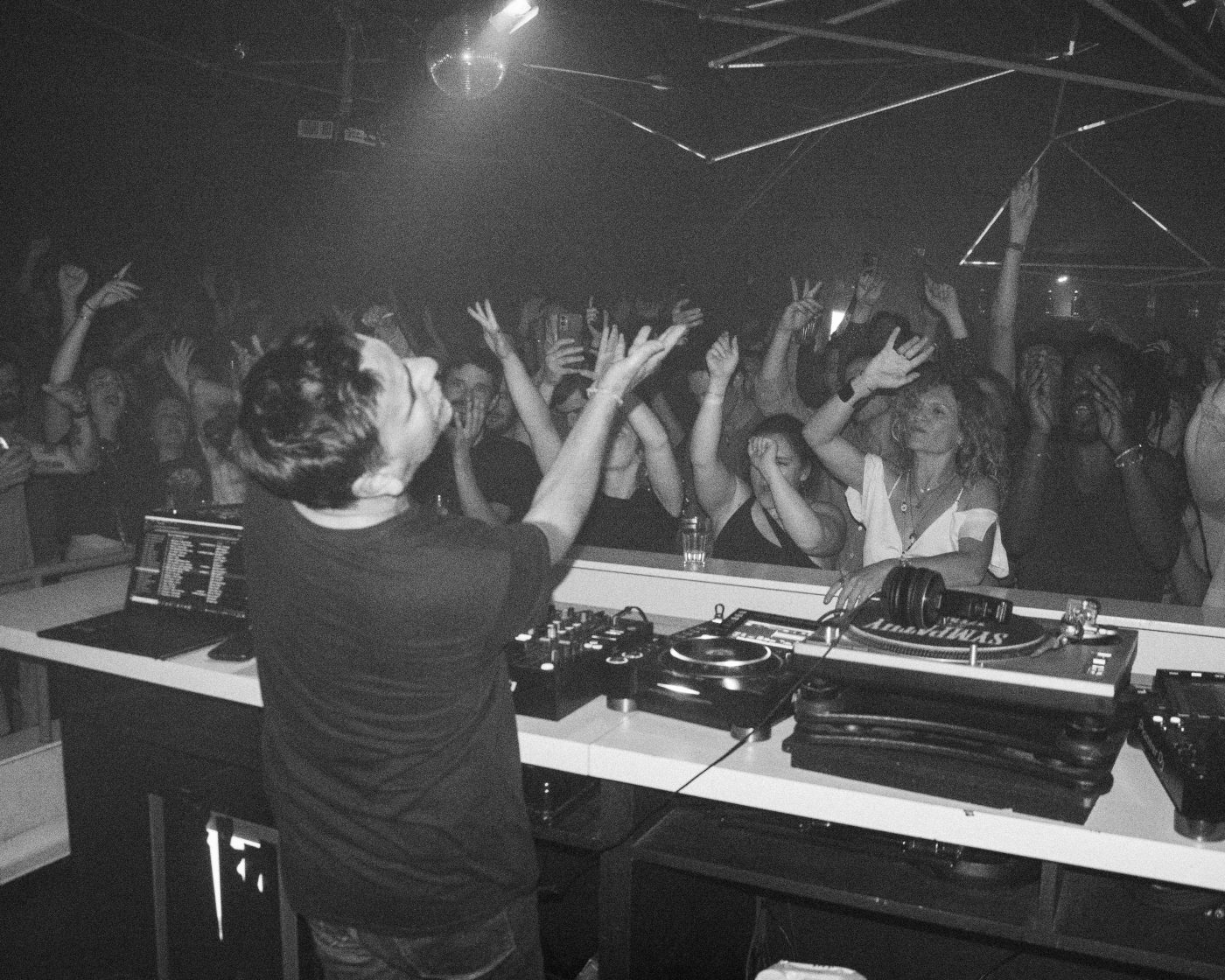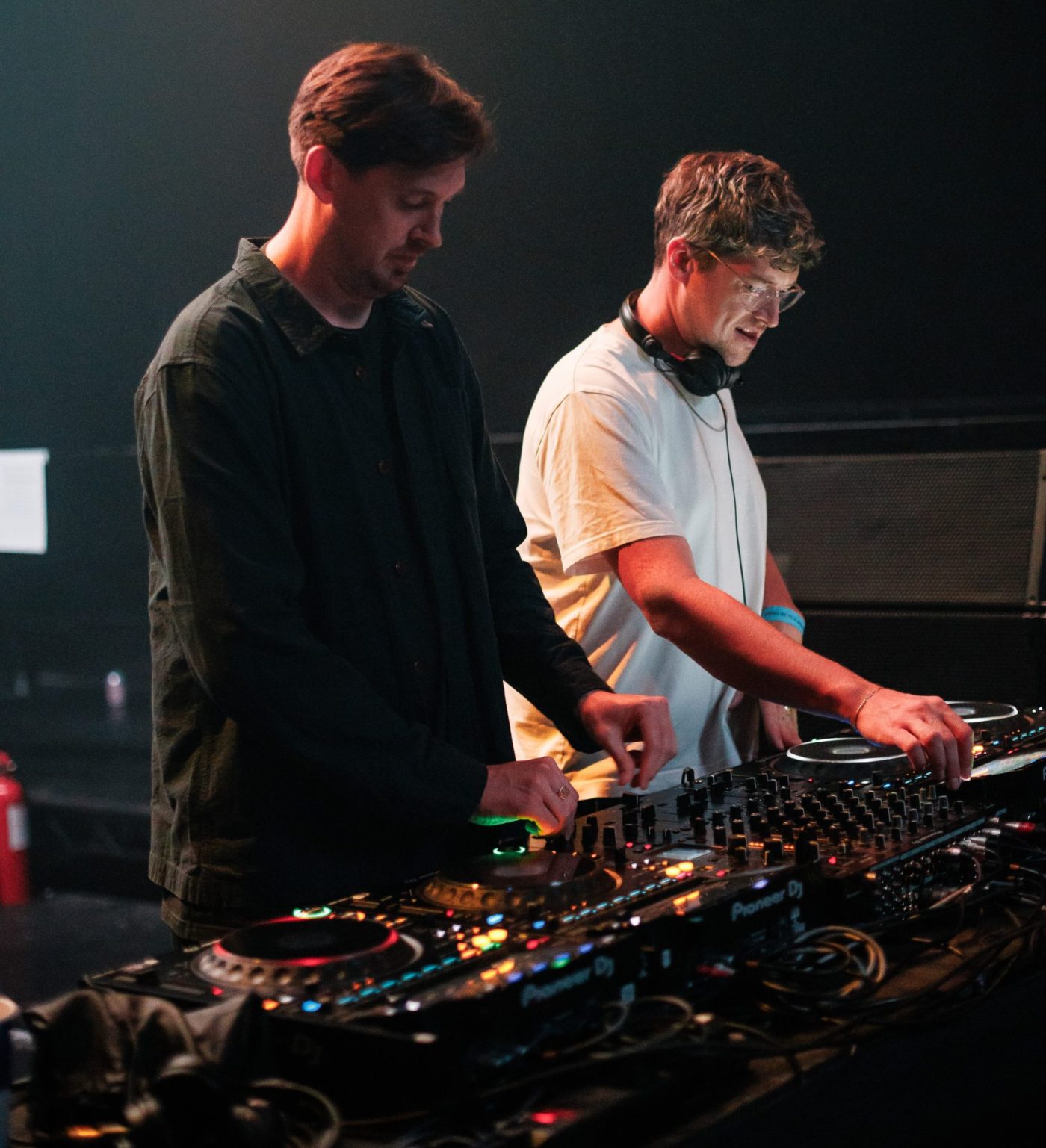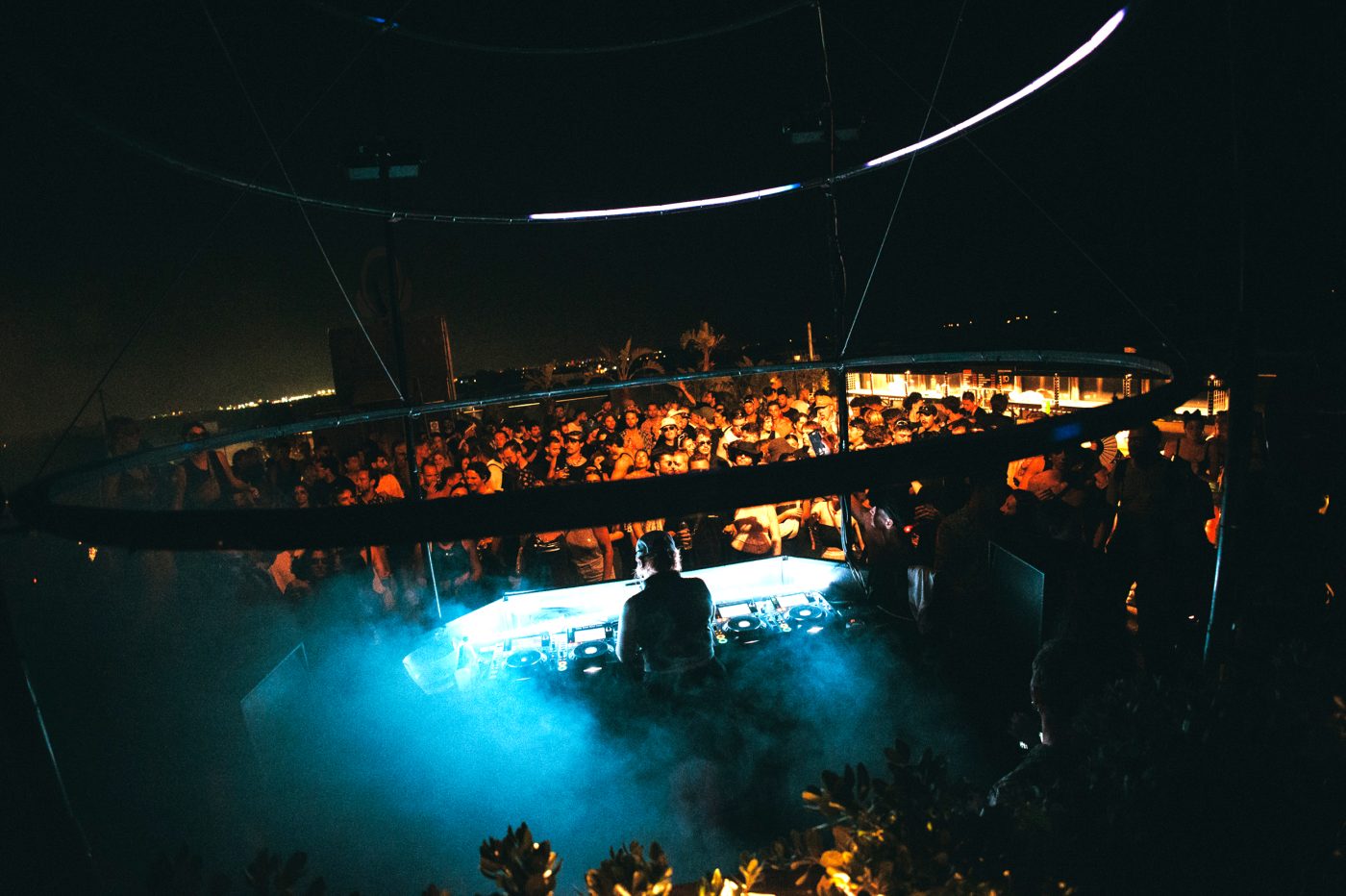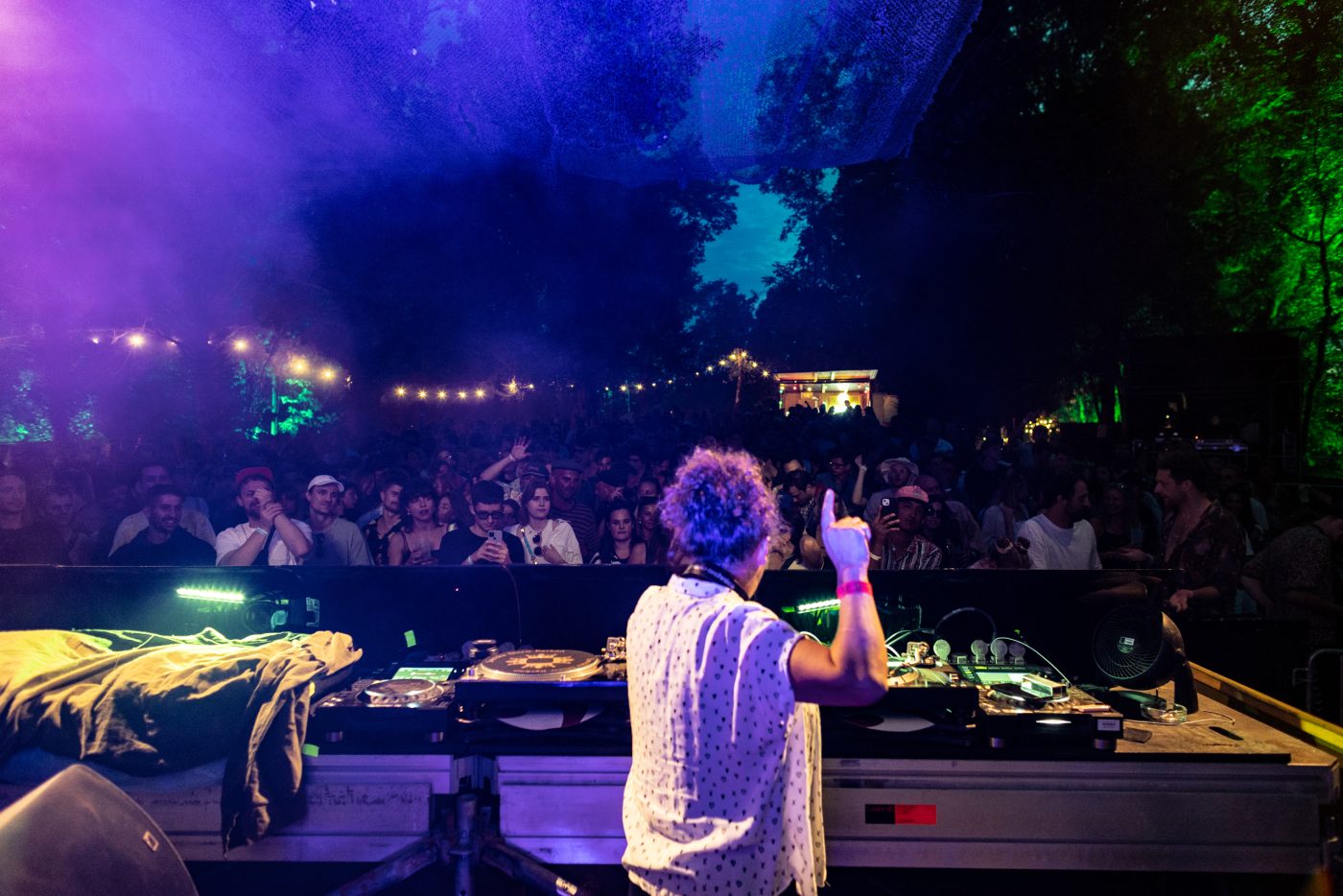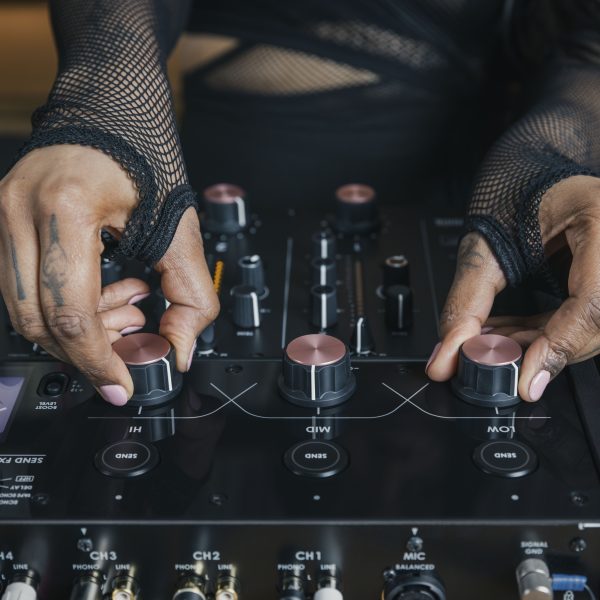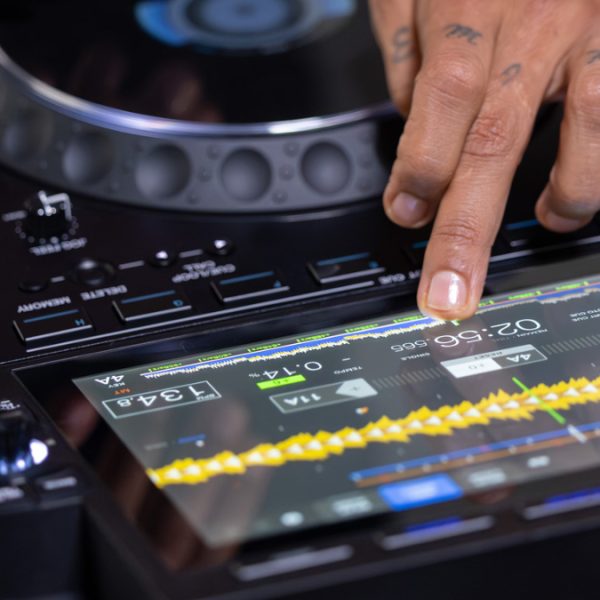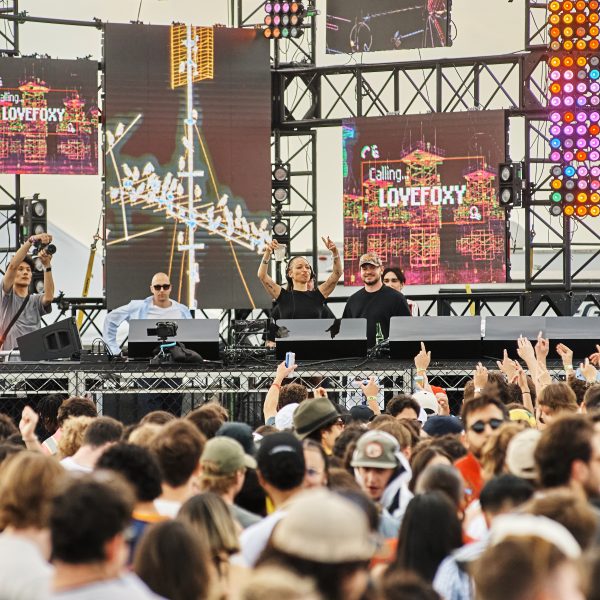Structuring an all-night-long set
Be it four hours or 14, there’s a lot of time to fill across the night.
For Laurent, the best approach is one of balance. “There’s nothing better than a DJ who can take you into some kind of unknown places and surprise you and bring you up as well as down,” he said. “Because you can’t stay up all night. You can’t stay going faster or harder or more intense, track after track, you need to go up and down. It’s like food or a film, you can’t have a scene with people shooting each other for two hours because the film would be pretty bloody tiring.”
Saoirse structures her sets around variety, something she’s done for most of her career. “But in my all-night-long sets you will get everything,” she said. “I’ll start with jazz and IBM and experimental and might go to Italo, and then New Beat, and then deep, chuggy, proggy stuff.” This leads up to the few hours when Saoirse has her audience locked in. “It’s kind of like, you cannot leave the dance floor. You’re just locked in, heads down, dancing, nobody’s talking. Really groovy, kind of hypnotic stuff.”
Because Saoirse could play for up to 10 hours (or more), she emphasized the importance of “wacky” sounds, the kind that “make people turn their heads and be like, ‘What the fuck?’” For her, this can include ice cream van jingles, spoken word pieces, “weird horns,” the Countdown theme, or “Björk doing mad shit.” The type of sounds or samples that “stick in your head forever.”
Jane forms a structure depending on the “relative vibe” of where she’s playing—be it up a mountain in Japan on a Sunday afternoon, or a cold Friday night at a club in Manchester. “There are different requirements that would inspire me to play based on where I am,” she said, explaining how her “raw material” of multi-genre records—ambient, deep house, psychedelic techno, electro, progressive, breaks and more—allow her to adapt to any relative vibe. “But you will only hear things I would normally play anyway because I’m not going to try and fit things in just because I think, ‘Oh, it’s an eight-hour set,’” she added. “I believe in staying true to the storytelling that I would normally do anyway. It’s just a longer story. It’s a box set, not a mini-series.”
What does it mean to tell a “story” or “take a trip” or go on a “journey”?
All the DJs used the words “story,” “trip,” and “journey” during our discussions, words you hear regularly in DJ land. But what do they actually mean?
Jane explained how arriving at the club as early as possible and staying until the end allows the audience to understand the full “story” of the night. “Because that’s when you’re getting the experience,” she said. “Otherwise, why am I there? And not just me, any DJ. Why are they doing an all-nighter if you’re not prepared to listen to them all night? Come early because, for me, sometimes that’s the best part—the first three hours.”
This is when Jane is at her most “experimental,” “loose,” and “approachable” because the later it gets, the more likely the dance floor will be locked in. “So we can move through the gears together,” she said. “But if you come at the wrong time, I would just say, ‘Don’t come.’ It’s like reading a book from page 64. You’ve missed the introduction. You don’t know what’s going on—the sound, the vibe, anything.”
Jane added that you can still enjoy the set if you arrive halfway through, but you’re missing that collective experience. “I want to have that experience as much as the person on the floor,” she said. “Just because I’m doing the mixing, the crowd are, in some ways, doing the work by being there and responding, listening.”
Laurent creates a “trip” by playing widely contrasting genres at certain points of the night. He recalled a recent booking at Rex, where the club invited him to play from 12 until 4. “I absolutely loved it because for the first half an hour, I was playing some jazz and some piano, classical and stuff like that,” he said. “People were walking into the club, including the younger generation, and they’re not used to that. They are used to coming to clubs and straight away getting banging music. It’s like, no, you don’t want to walk into an empty club and be straight away banged on your head. You need a beginning and an ending, and you need to develop things.”
That night, Laurent moved through amapiano, soulful house, “percussive things,” techno, UK bass, and lots more. “It was beautiful, it was great,” he said. “And all-night-long sets allow you to play much more music. And I think when people go and listen to a DJ that plays all night, they are more ready to be taken on board and allow themselves—to let themselves—go into some kind of a trip.”
During the earlier phases of Saoirse’s career she learned how pacing affects the audience’s experience or “journey” of an all-night-long set; if she played too fast too early, the crowd would tire sooner. “Whereas if I’ve gone too deep or too fast by the end, people are like, ‘Oh, I’m done, my body’s done,’” she said. Now, she reduces the BPM gradually for the last few hours by weaving in Chicago house, for example, or tracks that people recognise or can sing along to, helping hook the audience in for longer. “I used to end with stuff like liquid drum & bass or something that feels good in the body, something quite beautiful.”
Exploring unique opportunities
“It’s an opportunity to play a more nuanced set and to fit in the various sounds of Dusky, as our style has evolved over the years, and it’s nice to revisit older sounds alongside new ones,” said Nick. “We often play quite a lot of older Dusky productions in these all-night sets, for example, whereas we don’t tend to have time to play so many in our regular sets.”
Aflie explained how having the extra time allowed the pair to “play with some more musical peaks and troughs” that they may not be able to do otherwise. “It can be fun to drop the energy down for a bit in the middle of the night, only to build it back up again,” he said. “Or it can be good to play a bit darker and moodier for a while, only to switch it up to something more melodic or euphoric. The contrast can work really well.”
Laurent described how all-night-long sets foster better connections with the crowd. “You know, once you’ve done an all-nighter and it has been strong in the interaction with your crowd, they’re the best,” he said. “They’re usually the moments you cherish most.”
Laurent talked about a recent all-nighter at a club in Cologne. He was scheduled to play for three hours but ended up playing seven (the DJ scheduled to follow him asked Laurent to continue). “At one point, we were so connected with the crowd they were ready to listen to anything,” he remembered. “And I really took them. That’s the whole thing: when you have time, at one point, it clicks, it switches, and then you can play what you want. You can go all the way to a salsa track in a techno club. It works, I did it. I did it in Japan, too. I did it in a lot of different places. And in Cologne, I played Art Ensemble of Chicago. I mean, this is not the easiest group to dance to. But young people…older people…they were really on it. If I had played that record three hours before, it would have never worked.”
Jane described how these sets offer the opportunity to showcase different sides of your skills. Let’s say you’re a peak-time DJ—“This is just a part of your eight-hour set if you’re doing that,” said Jane. “So if you’re using that as something that you’re used to playing…build the story around that. How did you get to that point? And where are you going to go from that point?”

